Fishing is a lifelong learning process which is compounded when, like ourselves, you continually try to target new species and use different techniques. Recently we decided to try to target Pollock on the fly in Northern Ireland.
Although we have had success for large Pollock on the saltwater fly in Connemara in Ireland, and also in Donegal, to date we have not fished in Northern Ireland for Pollock on the fly. So recently we headed off to the County Down Coast on the Irish Sea to see if we could hit some Pollock just before the end of summer season…one last blast.
It was not the most productive excursion, but it did yield some feisty small Pollock and perhaps more importantly we learned a good few lessons about saltwater fly fishing in Ireland.
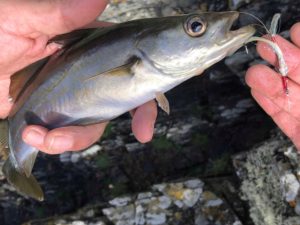
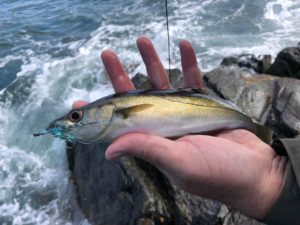
The most important lesson by far is that the Irish Sea is an unforgiving and tough environment to fly fish. Grabbing a fly rod and heading to the sea has none of the tranquility of the romantic saltwater fly fishing in the tropics on flats. The Irish Sea is generally pounding, relentless and seldom do you get out without a good shower or two of lashing rain. On the day we set out there was a strong breeze, reported as Force 4!
Of course, this does not diminish the beauty of the place as is evident in some of our photos, but the saltwater fly fisherman has to expect the worst from strong gusts of wind to a turbulent sea that can wreck equipment.
The idea of using a 7/8 rod (which seems to be a preferred weight for many saltwater fly fishers) in Irish conditions, at least from the rocks, seems impractical at best. The 10 weight rods we had seemed to deal with the conditions well.
The sea spray and several waves crashing over us meant a reel with a sealed drag was essential, along with a waterproof backpack (and good rain gear over course). About two hours in we also started to wish for waterproof socks or a wetsuit as the water seeped through the alleged waterproof Gore-tex shoes.
The fly lines were also battered on the rocks and not doubt were damaged. A stripping basket is a must to minimise harm to fly lines, let alone tripping you up on precarious rocks.
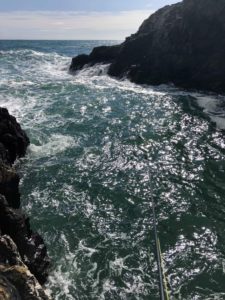 This all raises serious questions about what equipment to use. We were in two minds, one opinion, being you could use very expensive strong and resistant equipment, and other, hardy but relatively cheap equipment might be preferred. A good example in the Airflo Bluetooth 10/11 Saltwater rod
This all raises serious questions about what equipment to use. We were in two minds, one opinion, being you could use very expensive strong and resistant equipment, and other, hardy but relatively cheap equipment might be preferred. A good example in the Airflo Bluetooth 10/11 Saltwater rod, which performs in rough conditions cutting into the wind but has a smooth action at the same time. It is not the cheapest of Airflo rods, but significantly cheaper than many other saltwater specific rods.
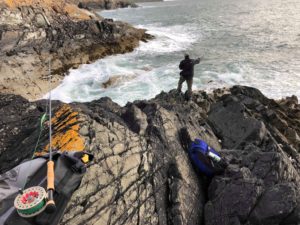
When fishing on beaches, lagoons or flats, a good line might make all the difference. But in the Irish Sea something rugged is more of what is needed, and knowledge of the type of places the fish might be hiding is far more important than your equipment. If one was fishing in the sea regularly in Ireland fly lines would no doubt need to be replaced fairly often as rocks, barnacles and limpets can be hazardous. Cold saltwater specific lines, with a tough outer coating, are probably best.
We were also shocked to see how quickly the leaders tended to fray. Even when using expensive 23lb Seaguar Ace Hard Fluorocarbon (preferred by many salmon fishers), abrasion was evident very quickly. Inspecting the leaders and replacing a few times on the trip was necessary.
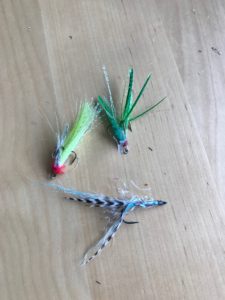
Flies also took a hammering, and although the robust and slightly cheaper equipment might be recommended for rods and fly lines, good quality flies are essential or better still tie your own as saltwater flies are generally not complicated. Some of the flies we used on this trip were commercially bought. The eyes fell of one and were blown away before hitting the water, and the others were pretty much destroyed after being tossed about in the sea and then being taken by some small Pollock. So save money on your rod and invest in good flies!
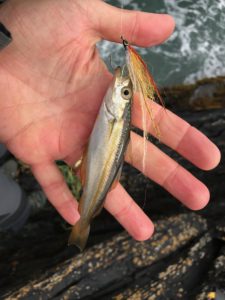
Finally, we were also left wondering if size does matter when it comes to Pollock flies. The first fish caught was a tiddler, but interestingly the fly it took was almost the same size of the fish. Although the slightly larger fish caught took smaller flies it did get us wondering if we should be using larger flies. It is not unusual to hit a Pollock on a 6 inch spinner, so why use a 2 inch fly?
Overall, it was a mighty day as they say in Ireland. The 4:30am start produced some spectacular photo opportunities and the sport for Pollock, although limited in number and size, was nonetheless rewarding particularly as we struggling against the conditions.
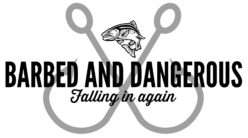
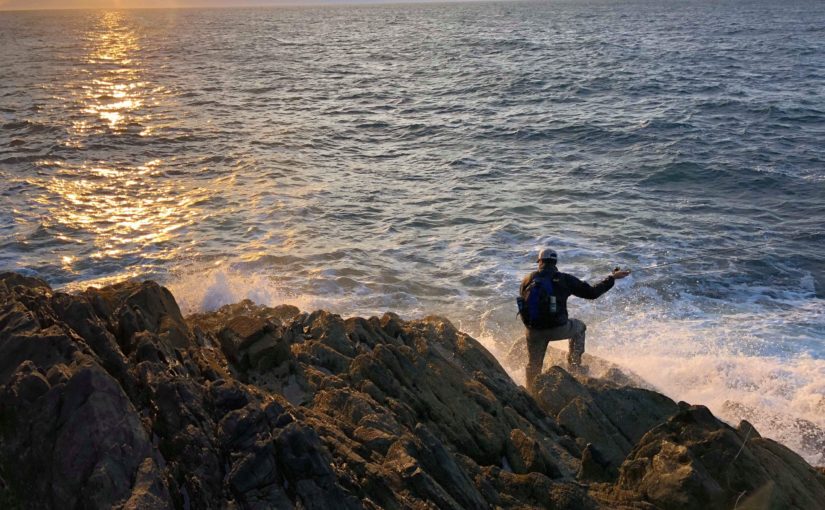
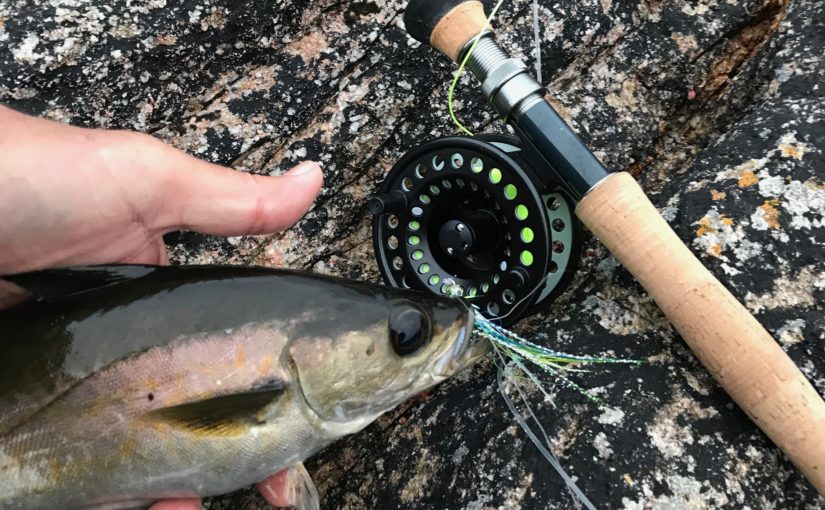
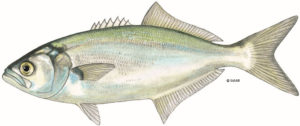
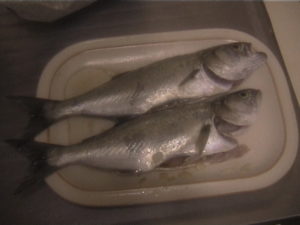
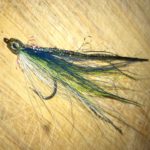
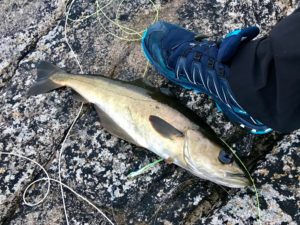 I then cast across the inlet I was fishing and on the first retrieve a Pollock threw itself at the fly, missing and launching itself out the water. On the next cast I hit the first fish, and from there is was just mayhem, fish after fish. I landed at least a dozen in a 1.5 hour session. I even quickly drove back to the holiday house in between to fetch my son so he could join in the action. The largest fish was in fact hooked by him as I cast and he retrieved in the fading light.
I then cast across the inlet I was fishing and on the first retrieve a Pollock threw itself at the fly, missing and launching itself out the water. On the next cast I hit the first fish, and from there is was just mayhem, fish after fish. I landed at least a dozen in a 1.5 hour session. I even quickly drove back to the holiday house in between to fetch my son so he could join in the action. The largest fish was in fact hooked by him as I cast and he retrieved in the fading light.